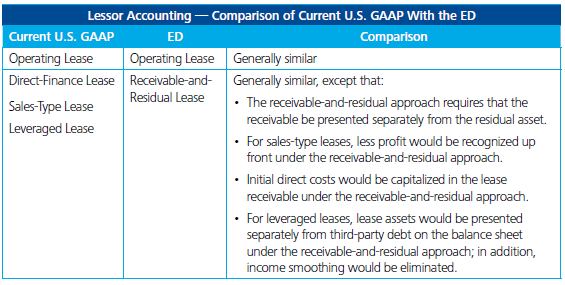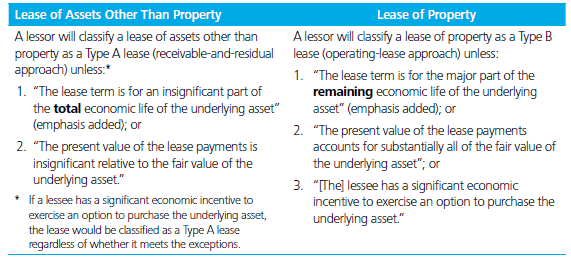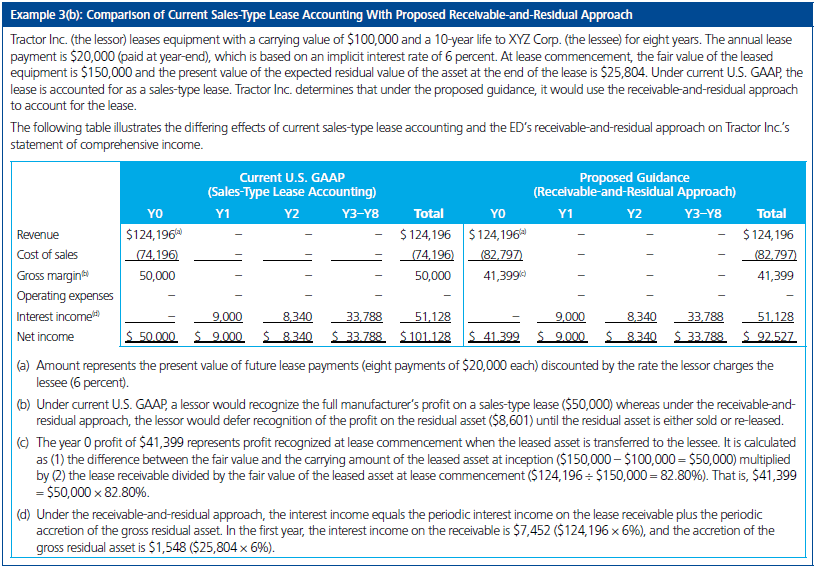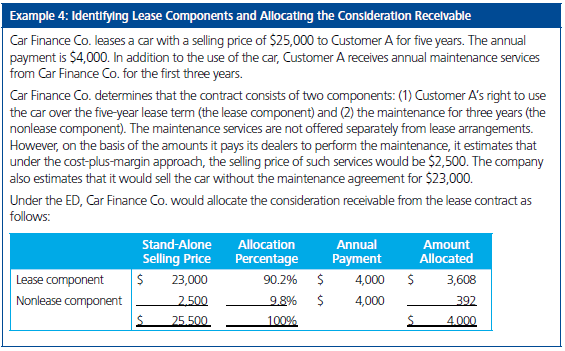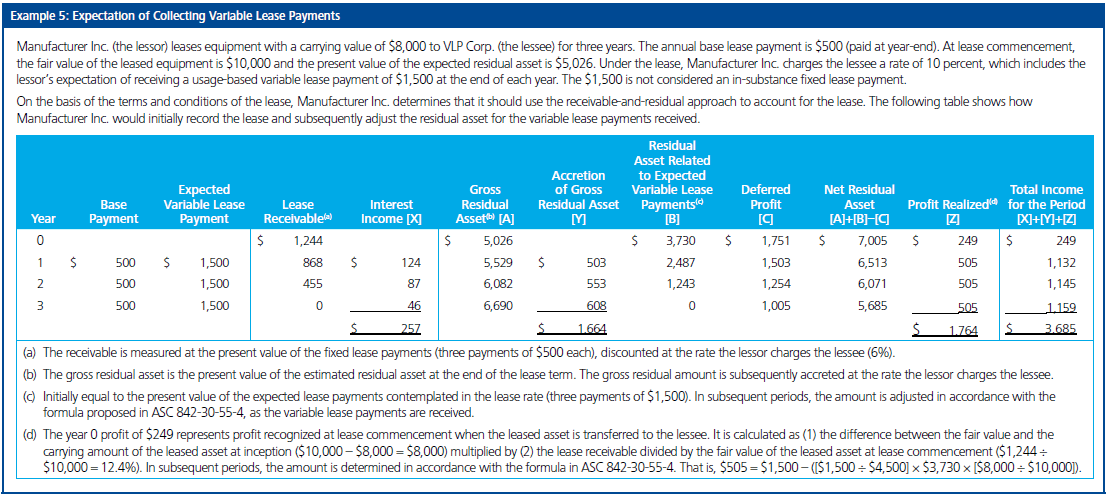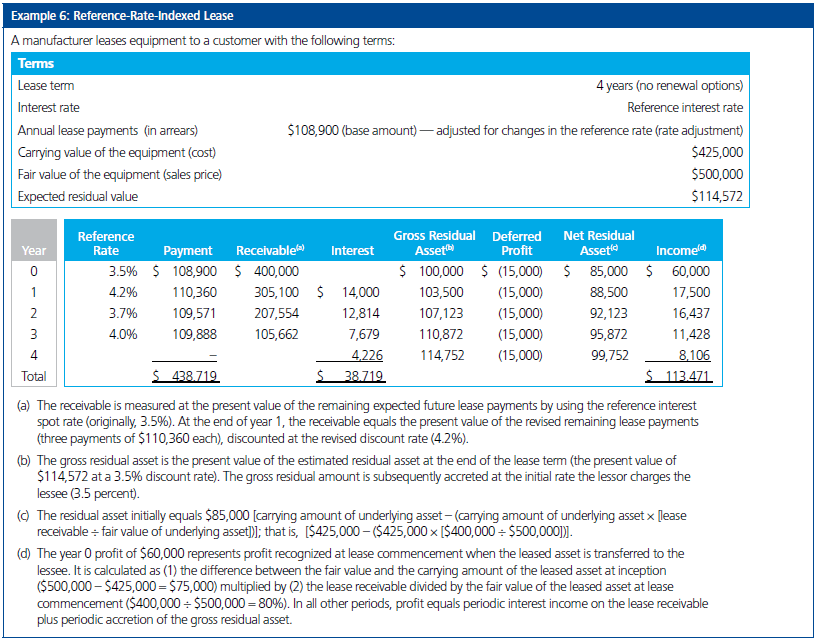Consumer & Industrial Products Spotlight — Proposed changes to lessor accounting: The lessor of two evils?
The Bottom Line
- On May 16, 2013, the FASB and IASB issued a revised exposure draft (ED) on lease accounting. The proposal would significantly affect consumer and industrial products (C&IP) companies that lease products to customers.
- Under the proposal, leases of assets other than property (e.g., machinery or vehicles) that are currently treated by lessors as operating leases may no longer qualify for such accounting; rather, in such cases, lessors would generally use the receivable-and-residual approach.
- The new receivable-and-residual approach could influence (1) how a lessor reflects the underlying asset in its financial statements, (2) when the lessor recognizes income from the lease, and (3) the overall presentation of lease income in the lessor’s statement of comprehensive income.
- Entities with large lease portfolios will need significant resources to meet the ED’s implementation and reassessment requirements.
- Comments on the ED are due by September 13, 2013.
Beyond the Bottom Line
This Consumer & Industrial Products Spotlight provides insight into select aspects of the recently issued leases ED that are relevant to C&IP companies that lease products to customers. For a comprehensive overview of the ED, including changes to lessee accounting and illustrative examples, see Deloitte’s May 17, 2013, Heads Up.
Background
The ED would significantly change lessor accounting by stipulating a two-model approach for lessors. While the ED retains the current concept of an operating lease for lessors, it introduces a new approach — the receivable-and-residual approach — under which a lessor would derecognize the underlying asset and would recognize in its place (1) a receivable for lease payments due and (2) a residual asset. Lessors would use these two approaches to account for all leases but would be allowed to exclude leases with a maximum possible lease term of 12 months or less, including any option to renew, from the ED’s recognition, measurement, and presentation requirements.
Direct-finance, sales-type, and leveraged leases would typically be accounted for under the receivable-and-residual approach. Whether a lease that is currently an operating lease would remain so under the ED depends largely on whether the leased asset is property (defined as “[l]and or a building, or part of a building, or both”) or an asset other than property. It is expected that lessors would generally account for leases of assets other than property (e.g., vehicle, equipment, and machinery leases) under the receivable-and-residual approach unless the lease term is relatively short. In contrast, the operating-lease approach would generally apply to leases of property unless the lease term is relatively long or the lease commences near the end of the asset’s life.
Key Issues
Classification
In determining whether to use the receivable-and-residual or operating-lease approach for a particular lease, the lessor would consider the nature of the leased asset as well as the terms and conditions of the lease, as explained in the table below:
An entity would determine the appropriate lease classification as of the lease commencement date and would not be required to reassess its classification unless the lease is subsequently modified and accounted for as a new lease. For example, a lessor may initially determine that a six-month equipment lease, with an option to renew for an additional two years, qualifies for the operating-lease approach because the lease term, which the lessor concludes should exclude the renewal option period, is considered an insignificant part of the total economic life of the underlying asset. If circumstances change and the lessee decides to renew the lease for the additional two years (i.e., the lessee now has a significant economic incentive to renew the lease), the lessor would not need to reconsider the lease classification.
Recognition and Measurement
When required to use the receivable-and-residual approach, the lessor would derecognize the leased asset at lease commencement and, in its place, recognize the following:
- A lease receivable, representing the lessor’s right to receive lease payments over the term of the lease. The lease receivable would be initially measured as the present value of the lease payments, discounted at the rate the lessor charges the lessee, plus any initial direct costs.
- A residual asset, representing the lessor’s claim to the economic benefits of the leased asset at the end of the lease term. The residual asset would be initially measured as the net amount of (1) the gross residual asset, which represents the present value of the expected residual value; (2) the present value of certain variable payments (if any); less (3) the deferred profit (if any).
In subsequent periods, the lessor would recognize interest income from the unwinding of the discount on the lease receivable. In addition, the lessor would subsequently accrete the gross residual asset to an amount equal to the expected residual value of the leased asset at the end of the lease term. The deferred profit would not be recognized until the residual asset is sold or re-leased.
For leases that qualify for the operating-lease approach, the lessor would continue to recognize the leased asset on the balance sheet and would accrue lease income over the term of the lease, generally on a straight-line basis.
Effect on Income Statement
The guidance proposed in the ED could significantly affect when a lessor recognizes lease income. For current operating leases that would be accounted for under the receivable-and-residual approach, recognition of income on a straight-line basis over the lease term would be replaced with recognition of up-front profit (if any), followed by recognition of a decreasing amount of interest income in each subsequent period.
In addition, under the receivable-and-residual approach, lessors would only recognize the part of the day 1 profit attributable to the portion of the asset that the lessee acquired. This differs from current U.S. GAAP, under which sales-type lessors recognize up-front profit equal to the entire difference between the fair value and the carrying amount of the leased asset. Under the ED, lessors would be prohibited from recognizing the profit related to the residual asset at lease commencement.
The lessor’s business model could also widen the disparity between the impact of current U.S. GAAP and that of the ED on how lease income is recognized in the statement of comprehensive income. If the lessor’s business model is to use leasing “as an alternative means of realizing the value from the goods that it would otherwise sell,” the income statement presentation under the receivable-and-residual approach would be on a gross basis, as indicated in Example 3. However, if the lessor’s business model is to use leasing to provide financing to the lessee, the up-front profit would be presented on a net basis (i.e., in a single line item).
Other Items
Components of a Lease Contract
Lease contracts generally include a number of “components,” including the lessee’s right to use the leased asset, executory costs (e.g., property taxes), and possible service arrangements between the lessee and lessor.
Under the ED, the lessor would identify the various lease and nonlease components and allocate the consideration receivable among them on the basis of their relative stand-alone selling prices. If the stand-alone selling price of a component is unavailable, the lessor would use an appropriate method to estimate it, such as “cost plus margin.”
Expected Variable Lease Payments Included in the Lease Rate
For leases that contain usage- or performance-based variable lease payments, the lessor would need to consider whether the base lease rate includes an expectation of receiving those variable lease payments. If the base lease rate does not include that expectation, the variable lease payments would be recognized in income when earned unless they are in-substance fixed lease payments.
However, the base lease rate may reflect an expectation of receiving variable lease payments — for example, when a lessor leases a car for a base payment of $0 and expected usage-based lease payments of $4,800 each year. In such situations, the lessor would not record a receivable for the $4,800 but would include the present value of the expected variable lease payments as part of the residual asset. Upon receiving an expected lease payment, the lessor would decrease that portion of the residual asset and recognize a portion of the deferred profit in accordance with the formula proposed in ASC 842-30-55-4.1
Variable Lease Payments Based on a Reference Interest Rate
Under the ED, a lessor would include variable lease payments that are based on an index or a rate in the measurement of the lease receivable. The lessor would use the spot rate, rather than the forward rate, to measure such payments. The payments (and, accordingly, the receivable) would be remeasured in each reporting period for any changes in the index or rate. If the variable payments are based on a reference interest rate (e.g., the LIBOR rate), the discount rate used to calculate the receivable would also need to be updated in each reporting period for any changes in the rate. Any changes in the lease receivable would be recognized in earnings.
Residual Value Guarantees
Under the ED, lessors would only recognize amounts receivable under residual value guarantees as lease payments if the counterparty to the residual value guarantee (which may be the lessee) also receives the benefits of the residual asset at the end of the lease term (i.e., the lessor is guaranteed to receive a fixed amount at the end of the lease). However, the lessor would need to consider residual value guarantees when assessing the residual asset for impairment.
Impairment
The ED would require the lessor to test the lease receivable and residual asset for impairment by applying ASC 310 and ASC 360, respectively. ASC 360 prescribes a two-step process for determining whether an asset is impaired. In the first step, the sum of undiscounted cash flows expected from the asset is compared with the asset’s carrying amount. If the carrying amount exceeds the sum of undiscounted cash flows, the carrying amount is compared with the fair value of the asset. Because the residual asset under the receivable-and-residual approach would initially be measured on a discounted basis, the ASC 360 two-step impairment model may result in delayed recognition of impairment as compared with lease arrangements currently accounted for as sales-types leases. For current operating leases that would be accounted for under the proposed receivable-and-residual approach, the impairment analysis under ASC 360 would shift from a focus on the recoverability of the entire leased asset to the recoverability of the residual asset.
Modifications
The ED provides guidance on accounting for modifications to leases. Modifications include substantive changes to the lease contract, such as changes to the contractual lease term or contractual lease payments. When a modification occurs, entities would account for the contract as a new contract when the modification becomes effective. C&IP lessors would need to use judgment in determining whether a contract modification is substantive because the ED does not include any interpretive guidance on this topic.
Challenges
Entities will encounter numerous challenges in implementing the ED, including those related to:
- Increased judgment — Given the replacement of bright-line rules with a principles-based approach, an entity will often have to use judgment in applying the ED (e.g., when determining lease classification and measuring lease payments and lease term). These judgments should be consistent from period to period and throughout the organization if the accounting function is decentralized.
- Data requirements — Entities need to summarize, validate, and analyze detailed data from individual leases to implement the proposed requirements. Organizations that operate in multiple jurisdictions often lack a central repository housing key data on all lease contracts. To ensure consistent application, entities may need to gather these details for the entire organization. This task is likely to be complex and time-consuming.
- Changes to systems, processes, and controls — Entities will most likely need to make several changes to systems, processes, and controls to store key data, perform calculations, and process accounting entries in a controlled and secure environment on an ongoing basis. These changes should be investigated well before the standard is implemented to allow for lengthy lead times. Automation of this process will be imperative for effective and efficient financial reporting.
- Contractual terms tied to financial metrics — The proposed accounting changes could affect many key financial statement measures tied to the statement of comprehensive income (e.g., EBITDA). Companies should proactively assess the impact of the accounting changes on contracts with terms linked to financial metrics, such as debt arrangements, earn-outs, and compensation arrangements.
- Taxes — Tax departments will need to evaluate how the accounting changes will affect the overall tax analysis, including possible changes in cash taxes paid (i.e., financial statement changes may affect transfer pricing, state apportionment, or non-U.S. taxes) and changes in deferred tax positions related to book/tax differences in accounting for leases.
Thinking Ahead
The boards have requested feedback on many of the core elements of the ED. C&IP entities are encouraged to play an active role in the standard-setting process. Comments on the ED are due by September 13, 2013.
1 For titles of FASB Accounting Standards Codification (ASC) references, see Deloitte’s “Titles of Topics and Subtopics in the FASB Accounting Standards Codification.”

